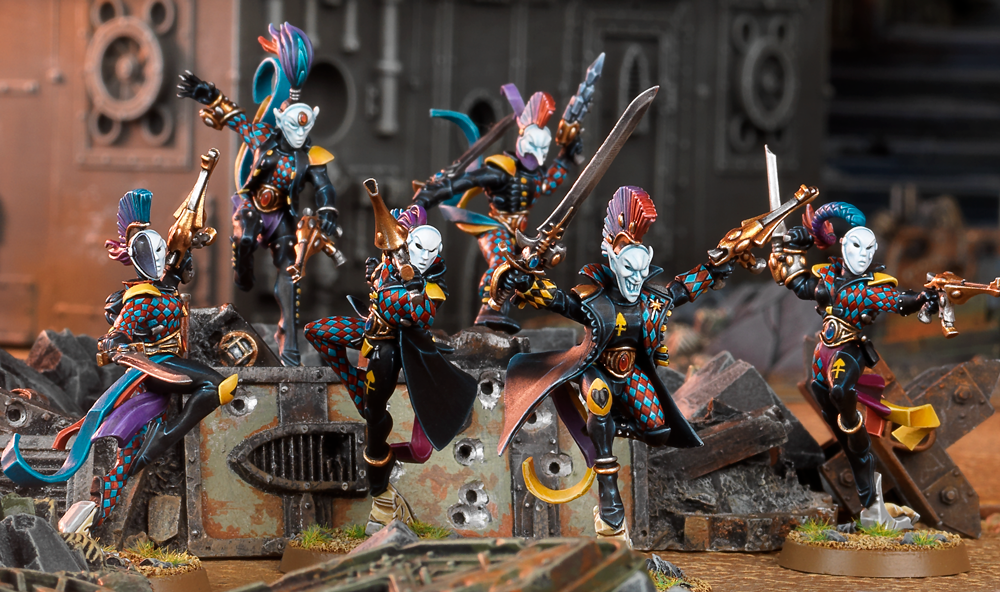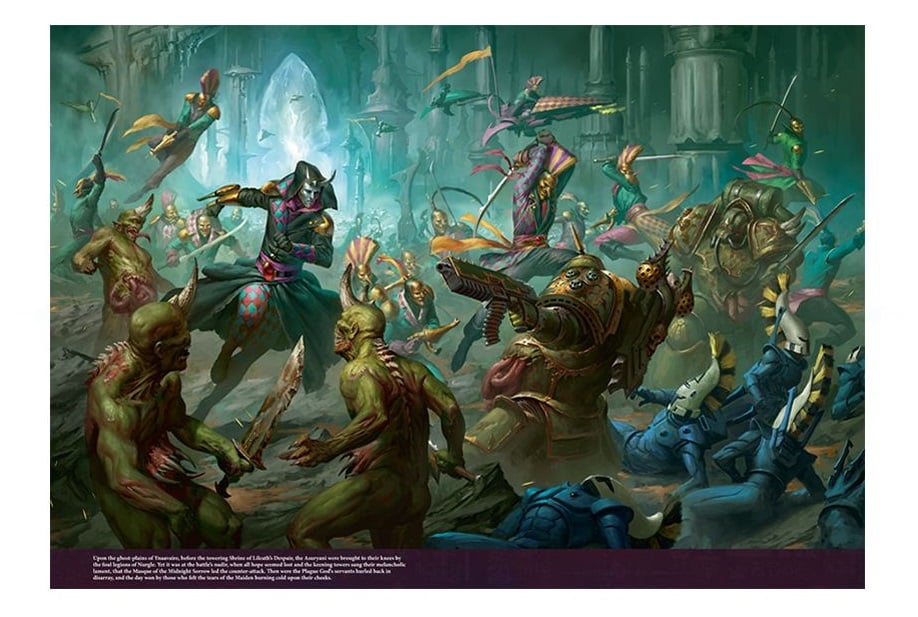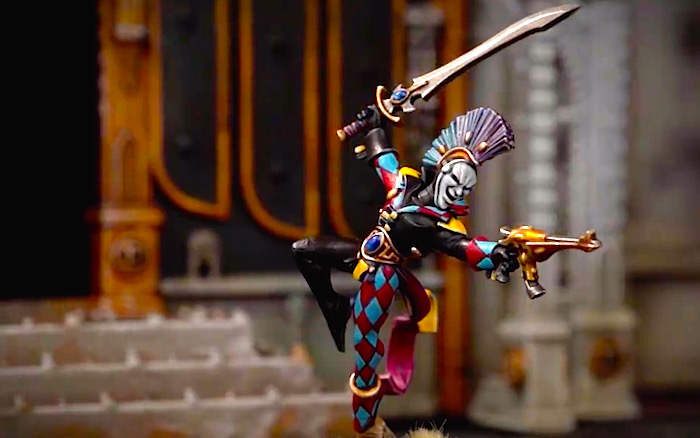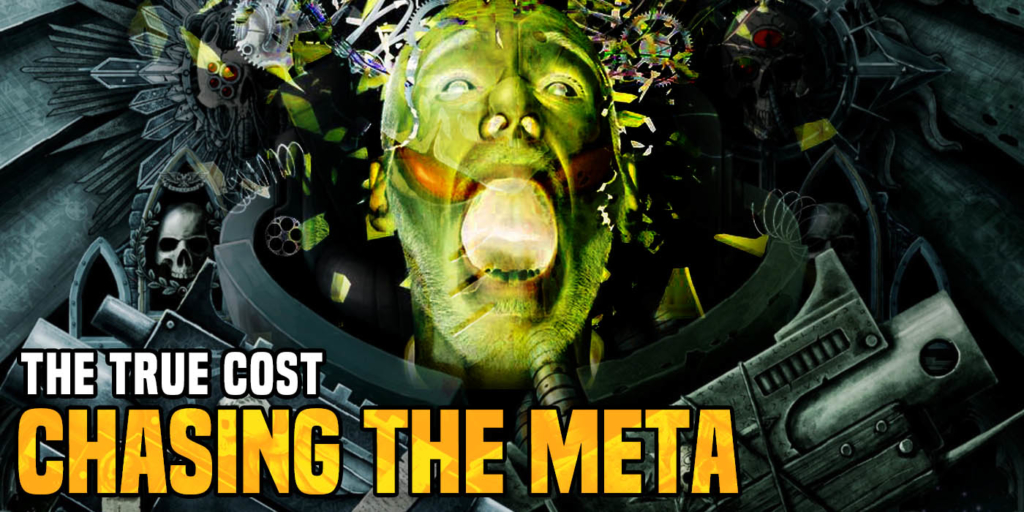Warhammer 40K Lore: Make Sure You Wear Your Masque
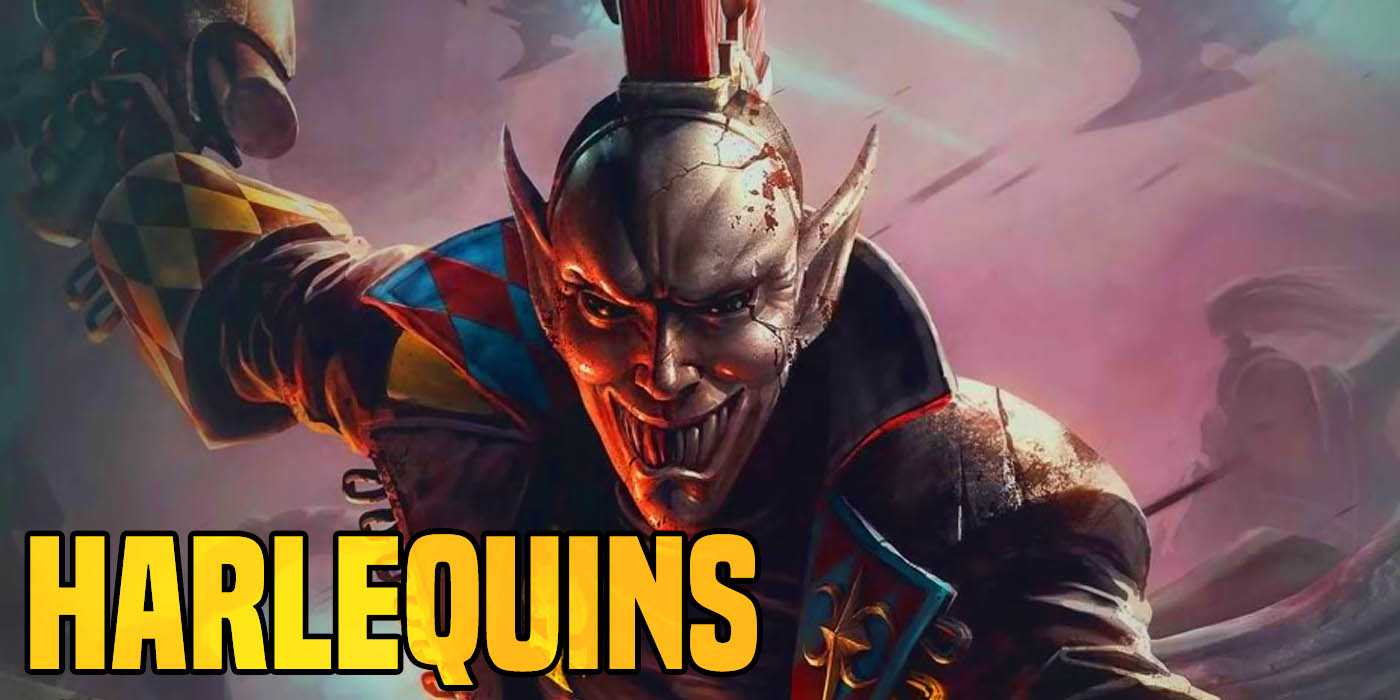
One of the most discussed objects in the Imperium is the humble Masque. Today we shall discuss the many, many forms Masques might take.
Greetings Lore-masters and Lore-master initiates. Today’s lecture on the policy schisms of the Departmento Munitorum (M38-39) has been placed on temporary hold. Loremaster Fenrik has been categorized, according to form 378.2-A subsection C “Inventory Reclamation” as a Lasgun Charge Pack, Power Pack, Battery, or Field Ration(s) and has been accordingly reassigned to the 39th Harukoni Drop Infantry. In the meantime, to help Loremaster Fenrik prepare for his new duties, we’ve prepared a lecture on the varieties of Masques of Masques–
No, Loremaster-Initiate Crenshaw, not the Masque of Slaanesh. Though some Harlequin Masques wear masks to portray the Masque. But we’re unmasking the intricacies of Harlequin Masques, laying bare the deadly grace that has come to define a small but powerful section of the burgeoning Ynnari army.
The Harlequins, or Rillietann, are a unique subset of the Eldar race, who split their time between being talented battlefield fighters and theatrical performers. They exist outside of normal Eldar society and hold no allegiance to any Craftworld, Kabal, or other form of authority other than to their own belief in the Eldar deity Cegorach, the Laughing God.
The overall leaders of the Harlequins are known as the Great Harlequins. Harlequins organise themselves into two standard units, the troupe and the masque. A troupe is a number of ‘ordinary’ Harlequins (referred to as troupers) led by a Harlequin Avatar. A masque is simply one or more troupes that are accompanied by specialist performers. In each Masque, each Harlequin belongs to one of three Troupe Divisions, the Light (headstrong, aggressive, and heroic), the Dark (vindictive and flamboyant), and the Twilight (obsessively precise and detailed). Harlequin masques function with brutal efficiency, able to operate with extreme cohesion and coordination despite lacking a formal military chain of command and having little direction upon the battlefield.
Each of the Masque’s mythic plays has a battlefield counterpart, known as the Saedath. Essentially a strategic battle plan with an allegorical aspect, these inform target priority, overall strategy, and by which troupe division the conflict will be led. The appropriate Saedath is chosen based upon mythic cycles, ritual significance, or even the time of day. The most famous Saedath is Cegorach’s Revenge, the military counterpart of the Fall of the Eldar that values high-speed sorrow-driven slaughter over subtlety or cunning. Other Saedath’s are the Serpent’s Blood (which is performed entirely by airborne Masques), the Hundred Swords of Vaul, the Torments of the Fiery Pit, Heroes Path (which sees a Death Jester and Shadowseer play the roles of Ulthanash and Eldanesh and a Solitaire embodying their pride), Faolchu’s Blade (which sees a formation of Skyweavers and Voidweavers scream down upon the enemy to embody the Great Hawk’s consort as she bore the sword of Anaris to Eldanesh‘s hand), Cegorach’s Jest (which sees Voidreakers and Skyweavers blasting a path to a “prize” to evoke the Laughing God’s efforts to humble Kurnous), and Isha‘s Weeping.
Now that you see how the foul servants of the Aeldari’s heretical “laughing god” have been arranged, some devoted to retelling the same story over and over again–even employing ancient battle tactics across the modern battlefields of the 42nd Millennium (a fact which will certainly spell their own doom, eventually)–here is one example of a Harlequin Masque, and one that has failed pitifully in their mission at that.
The Masque of the Dreaming Shadow
It is the ancient duty of this Masque to prevent the awakening of the ancient Necrons, mortal enemy of the Eldar race. Known for their resentment of other Masques, this sentiment is however deliberately exaggerated – part act and part truth, deriving from the fact that the war against the Necrons distracts from the Laughing God’s true battle against She who Thirsts. For the most part, other Harlequins hold the Dreaming Shadow’s selflessness in high esteem.
The saedath performed by the Dreaming Shadow are almost always led by Troupes of the Twilight, for they stand upon the threshold between life and death. Their ranks are replete with such character such as the Watchmen of the Last Road, the Herald of Heg, and the Lockmistress. They spend much of their time in battle, gracing the halls of their kin only to perform or replenish their ranks. They recruit with great insistence, often against their new comrades will, for they believe their duties transcend desire.
And yet–despite their “efforts”, Necron continue to arise across the galaxy, leading us to conclude if perhaps hey had spent more time trying to accomplish their missing as opposed to dancing a profane (and not technically demanding) dance, they might actually have accomplished something.

